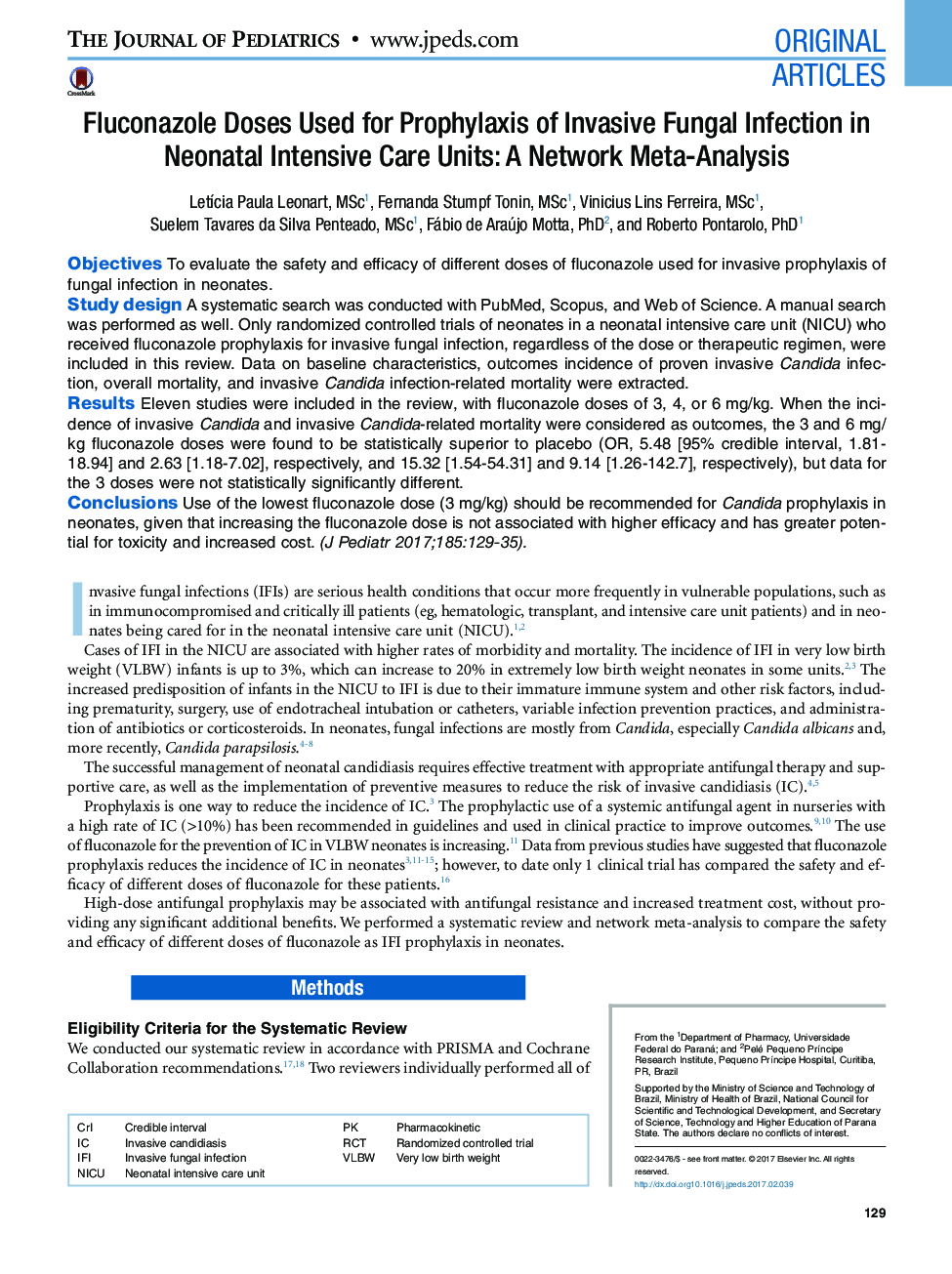| کد مقاله | کد نشریه | سال انتشار | مقاله انگلیسی | نسخه تمام متن |
|---|---|---|---|---|
| 5719128 | 1607413 | 2017 | 13 صفحه PDF | دانلود رایگان |
ObjectivesTo evaluate the safety and efficacy of different doses of fluconazole used for invasive prophylaxis of fungal infection in neonates.Study designA systematic search was conducted with PubMed, Scopus, and Web of Science. A manual search was performed as well. Only randomized controlled trials of neonates in a neonatal intensive care unit (NICU) who received fluconazole prophylaxis for invasive fungal infection, regardless of the dose or therapeutic regimen, were included in this review. Data on baseline characteristics, outcomes incidence of proven invasive Candida infection, overall mortality, and invasive Candida infection-related mortality were extracted.ResultsEleven studies were included in the review, with fluconazole doses of 3, 4, or 6âmg/kg. When the incidence of invasive Candida and invasive Candida-related mortality were considered as outcomes, the 3 and 6âmg/kg fluconazole doses were found to be statistically superior to placebo (OR, 5.48 [95% credible interval, 1.81-18.94] and 2.63 [1.18-7.02], respectively, and 15.32 [1.54-54.31] and 9.14 [1.26-142.7], respectively), but data for the 3 doses were not statistically significantly different.ConclusionsUse of the lowest fluconazole dose (3âmg/kg) should be recommended for Candida prophylaxis in neonates, given that increasing the fluconazole dose is not associated with higher efficacy and has greater potential for toxicity and increased cost.
Journal: The Journal of Pediatrics - Volume 185, June 2017, Pages 129-135.e6
